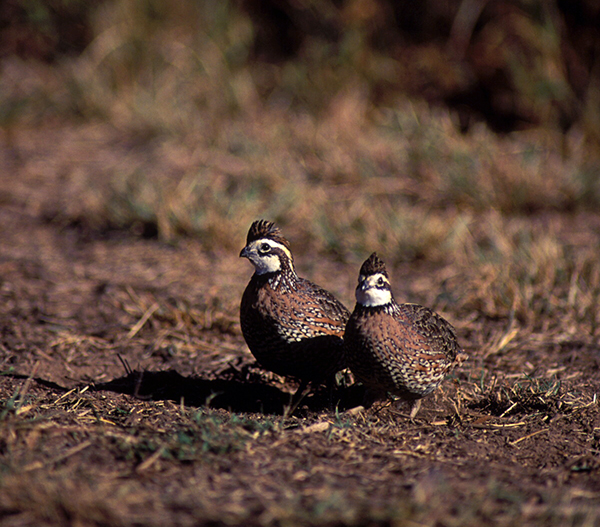
LANDOWNERS, THEIR EMPLOYEES, and hunters are seeing bobwhite quail this year where there haven’t been any for several seasons. One more mild winter with some spring rains next year and we may see the beginning of a quail comeback. For more information, contact Rolling Plains Quail Research Foundation at www.quailresearch.org. (Photo by John Jefferson)
by John Jefferson
The new dove season opened in the North and Central Zones on Sunday, September 1. Early reports confirmed the TPWD forecast that it could be one of the best dove seasons ever!
Traditionally, after the first two weekends, hunting slows down. With fewer hunters afield and more northern doves winging into Texas — and the South Zone just opening on September 14 – great hunting remains.
Other distractions compete, however. Alligator season opens September 10-30 in “Core Counties.” See TPW Outdoor Annual (OA), page 56.
Then, on the fourteenth, early teal season also opens. Prolonged drought in the Prairie Pothole breeding area caused a 15 % drop from last year. But rainfall in East Texas and along the coast has created healthy teal habitats. TPWD waterfowl biologist, Kevin Kraai, expects “an above-average teal season” across the wet conditions.
Early teal season ends September 29. Bag limit is six; possession limit is eighteen. Check the OA for licensing and ad-on requirements.
Then, on September 28, archery season opens statewide for white- tailed deer. It’s hoped that hunters will arrow more does. Remember: You Can’t Eat Horns! Only squirrels and other rodents do that.
That gets us to the most exciting opening day so far THIS year: Quail Season opens statewide October 26-February 23.
Ranchers and hunters say they’re seeing bobwhites for the first time in several years. One friend asked if the quail decline was over.
I wish I could say that it is. But it’s too soon to say. TPWD quail biologist, John McLaughlin, agrees.
It takes more than just one good year of reproduction. If the birds go through the winter in fairly good condition and have good reproduction next spring, then we can start feeling good about it. Quail declined over several seasons; it takes time, adequate rainfall, and lotsa luck for a real comeback to occur.
“Some landowners are seeing bobwhites where they hadn’t seen any lately,” McLaughlin told me. That would create optimism.
“Last spring’s (2023) bump in population combined with improved habitat, got it started,” he said. “Then a mild winter and some rain helped. Now, birds are moving out of core areas into new country. It’s a good year, so far – especially in the Rolling Plains (RP).”
The best areas are the west and north RP. But rainfall can vary from one ranch to the next.
Dr. Dale Rollins, Ph.D., and longtime wildlife colleague who founded the respected Rolling Plains Quail Research Ranch, sent me the Research Ranch’s newsletter containing reports from 92 of his vast contacts!
From that, Rollins summarized the reports. The RP north of IH 40 had the most favorable comments, including large coveys! The southwestern RP had mediocre to good reports. The eastern RP was disappointing.
Most of South Texas was good, with the southern half and western parts being the best. Blue quail in the Trans Pecos were only fair.
Bear in mind that TPWD and RPQRF have not completed their quail counts. More information is yet to come.
JJ




